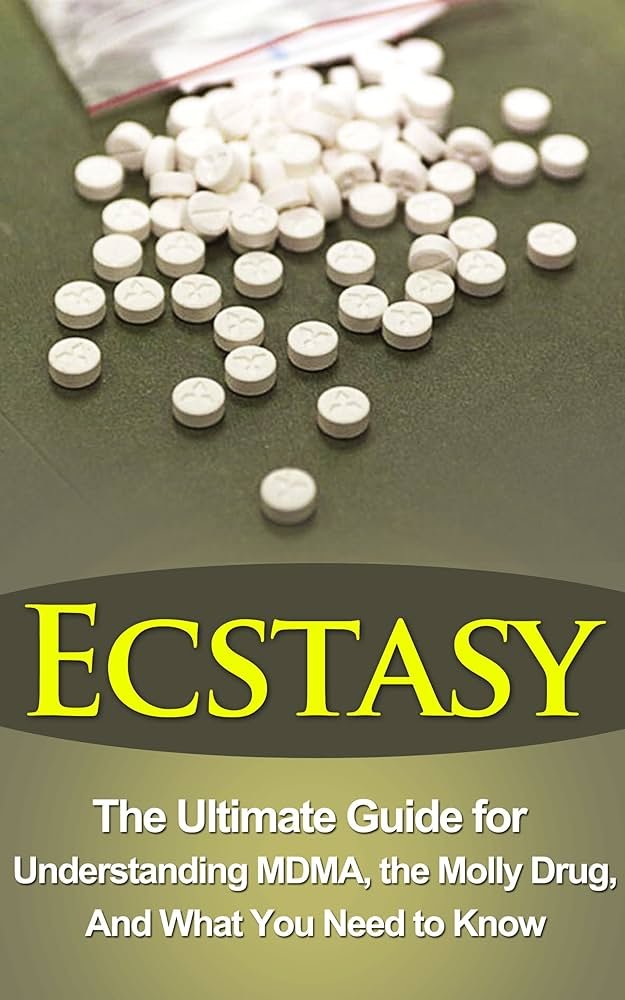MDMA Explained: Uses, Side Effects, and the Future of This Party Drug

Introduction
MDMA, commonly known as Ecstasy or Molly, is a synthetic drug famous for its euphoric and energizing effects. Initially developed in the early 20th century, MDMA gained popularity as a party drug in the 1980s and continues to be widely used in festivals and nightclubs today. However, in recent years, researchers have been exploring its potential medical benefits, particularly in treating PTSD and depression.
While some see it as a breakthrough treatment, others warn of its risks, including neurotoxicity and potential abuse. So, what exactly is MDMA, how does it work, and what does the future hold for this controversial substance? Let’s dive deep into the science, uses, and side effects.
What is MDMA?
Chemical Composition and Street Names
MDMA (3,4-methylenedioxymethamphetamine) is a psychoactive drug that alters mood and perception. It belongs to the amphetamine family and is chemically similar to both stimulants and hallucinogens. Molly increases energy, pleasure, emotional warmth, and sensory perception, making it a popular choice at music festivals, raves, and parties.
It is sold under different names, including:
- Ecstasy – The pill form, often mixed with other substances.
- Molly – A supposedly “pure” crystalline powder form, though it’s often adulterated.
- E or X – Shorter street names for MDMA tablets.
A Brief History of MDMA
It was first synthesized in 1912 by the German pharmaceutical company Merck. It wasn’t intended for recreational use but rather as a compound in medical research. In the 1970s, psychiatrists started using molly in therapy to help patients with trauma and emotional disorders. However, as its recreational use surged in the 1980s, the U.S. Drug Enforcement Administration (DEA) classified MDMA as a Schedule I drug, meaning it had no accepted medical use and a high potential for abuse.
Despite its illegal status in most countries, molly has remained popular among partygoers and is now being reconsidered for medical applications.
How Does MDMA Work?
Effects on the Brain and Body
Molly primarily affects the brain by increasing the activity of three neurotransmitters:
- Serotonin – Boosts mood, emotional closeness, and empathy.
- Dopamine – Creates feelings of pleasure and increases energy.
- Norepinephrine – Raises heart rate and blood pressure.
After taking molly, users typically experience effects within 30 to 45 minutes, lasting for 3 to 6 hours. These include:
- Intense feelings of happiness and emotional warmth
- Increased energy and sociability
- Enhanced sensory perception (music, lights, and touch feel more intense)
However, the comedown can be harsh, with users experiencing depression, anxiety, fatigue, and irritability as serotonin levels drop.
MDMA Uses: Recreational and Medical
Recreational Use in Party and Festival Culture
Molly is widely used in nightclubs, raves, and music festivals because of its ability to enhance social bonding and sensory experiences. Users report feeling more connected to others, which makes it popular in party environments. However, illicit MDMA is often mixed with dangerous substances like methamphetamine, fentanyl, or synthetic cathinones (“bath salts”), increasing health risks.
Medical Use: Can MDMA Treat PTSD and Depression?
Recent studies suggest it may have significant therapeutic potential. The Multidisciplinary Association for Psychedelic Studies (MAPS) has been leading research on MDMA-assisted therapy for Post-Traumatic Stress Disorder (PTSD). Clinical trials have shown that MDMA can help patients process traumatic memories by reducing fear and increasing emotional openness.
Molly is also being investigated for treating:
- Depression – By boosting serotonin, MDMA may alleviate depressive symptoms.
- Anxiety in Terminal Illnesses – Helps reduce distress in patients with life-threatening diseases.
- Social Anxiety in Autism – Some studies suggest MDMA improves social confidence.
Risks and Side Effects of MDMA
Short-Term and Long-Term Risks
While molly has potential benefits, it also carries risks. Some short-term side effects include:
- Increased heart rate and blood pressure
- Dehydration and overheating (common at crowded festivals)
- Jaw clenching and teeth grinding
- Nausea and dizziness
More serious risks include:
- Serotonin Syndrome – A potentially fatal condition caused by excessive serotonin buildup.
- Neurotoxicity – Long-term MDMA use may damage serotonin-producing neurons, leading to memory loss and cognitive issues.
- Psychological Dependence – While not physically addictive, some users develop a habit due to MDMA’s euphoric effects.
Harm Reduction Strategies
For those who still choose to use it recreationally, harm reduction is crucial. Some tips include:
- Testing – Using drug testing kits to check for dangerous adulterants. Buying from us means you don’t need to worry about testing anymore. We only sell quality lab tested molly.
- Staying Hydrated – But avoiding overhydration, which can lead to water intoxication.
- Taking Breaks – Avoiding back-to-back doses to prevent serotonin depletion.
- Using in Safe Environments – With trusted friends to minimize risks.
Conclusion
MDMA remains one of the most controversial drugs in the world. While its recreational use is popular at parties and festivals, its potential for medical benefits is gaining serious scientific attention. With ongoing research into MDMA-assisted therapy for PTSD, depression, and anxiety, the future of this drug may shift from the club scene to the doctor’s office.
However, MDMA also carries significant risks, including potential neurotoxicity, dependence, and harmful adulterants in the black market. As discussions around its legalization continue, it’s essential to balance harm reduction, education, and medical research to ensure safe and responsible use.
FAQs
Is MDMA addictive?
MDMA is not physically addictive, but users may develop a psychological habit due to its euphoric effects.
How long do the effects last?
The effects typically last between 3 to 6 hours, with after-effects lasting up to 24 hours.
Can MDMA cause brain damage?
Long-term MDMA use may damage serotonin-producing neurons, leading to memory and cognitive issues.
Can you overdose on MDMA?
Yes, high doses or adulterated MDMA can cause overheating, serotonin syndrome, or even fatal reactions.

